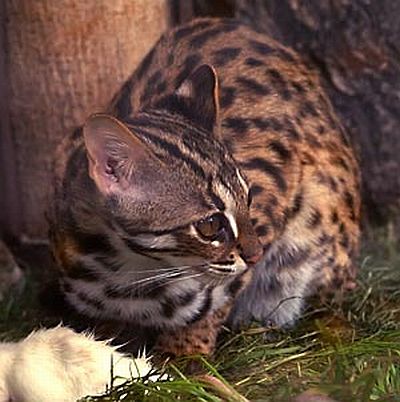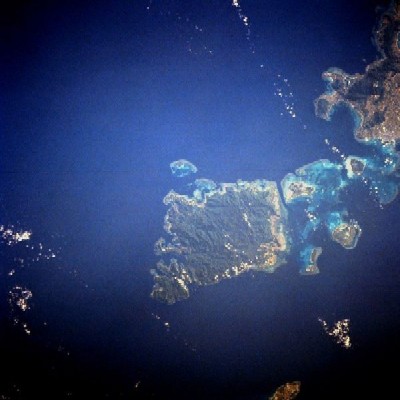
An increase in tourism, vehicles and a deadly frog fungus is being held responsible for landing a rare Japanese wildcat on the ‘critically endangered list’.
This change in status by the Japanese Environment Ministry is the latest indication of the desperate plight of this feline also considered to be a ‘living fossil’. Experts note that the Iriomote cat has been at- risk since its discovery in 1967. By 1985 and 1994, only about a hundred of these animals remained. Now, a new ongoing survey has found that the Iriomote cat population is falling rapidly. The causes are believed to include loss of its natural habitat and road-kill deaths.
Found only on Iriomote Jima, the Iriomote cat is no larger than a housecat. It blends into the local environment because of its long dark fur and bushy tail. Once believed to be a distinct Specie, recent research has claimed that this cat could actually be a relative of the south- east Asian leopard. It became an inhabitant of Irimote Jima around 200,000 years ago. Iriomote Jima a tropical island with a craggy landscape is a part of the Ryukyu archipelago which stretches from Japan to Taiwan.

Satellite Image of Iriomote Jima
Lowland coastal areas are a favored habitat for this cat and it generally resides in the northern and south- eastern parts of the island. However, this is also the area which is inhabited by a large human population. Iriomote Jima has 2318 residents. Masako Izawa, a professor at the University of the Ryukyus who has been studying the cat since 1982 confirms that the cat’s survival is threatened most by the human impact on its habitat.
Though people came to live here only after the Second World War, this island’s population has increased by a fifth since, last 10 years. Human population has brought with it all the usual civilization trappings including roads. Unfortunately for the cat, Iriomote Jima’s only highway runs along its northern coast and right across its natural habitat. This has resulted in 41 road- kill deaths since 1978. This is despite the fact that sections of these roads are designated as ‘eco-road’ complete with warning signs for drivers over 80 special underpasses for the cats.
Fortunately, a redeeming role is being played by the Iriomote Wildlife Conservation Center. In 1995 the Center opened a clinic on the island where ill and injured cats were tended to. A total of 12 injured cats have been taken into this facility so far and 4 have been returned to the jungles. The Center is also playing a significant role in looking after the cat’s assorted prey which includes small mammals, birds, lizards, fruit bats, crickets, and rather unusually frogs.
The latter has put the wild cat at risk from the from chytrid fungus, a deadly frog disease first reported in Japan late last year. Scientists are worried, they believe that if the fungus reaches the island, it could have a very damaging effect not only on the frog population but also on the Iriomote cat. As a preventative measure, disinfectant mats are being laid out at the island’s ports and conservationists are running a poster and flier campaign to inform residents and visitors of the risks involved.
Despite all these measures, the numbers of the Iriomote cat continue to decline. Their disappearance is exacerbated by the continued destruction of their habitat by humans; conservationists attribute this to increasing tourism, which actually is a staple industry for this poor region of Japan where farmers use it to support their income. Every year new facilities like hotels are being built to accommodate the over 350,000 tourists that visit this island annually.
Maki Okamura, a scientist at the Iriomote Wildlife Conservation Centre observes:
In the present situation we are not able to do much to limit the increase and are concerned the island will be overexploited.
He adds:
The most difficult and important thing is gaining the understanding of the islanders on the need to protect the cat. At times the island’s development and the cat’s protection are directly opposed.
While extending reserves is one option, this could be a problem as the cat is already sharing most of its primary habitat with automobiles, islanders, and the holidaymakers.
Izawa notes:‘Reserves are not the solution for all problems. We need some regulation or management by government for the development for tourism.’
Further that:
If we think about how to stop destruction of the cat’s habitat, prevent traffic accidents, and take other measure we can stop the extinction.
Both scientists stress that it is important to continue to protect the cat in the wild though captive breeding may eventually become an option.
Okamura said he expects that:
…the reclassification to critically endangered will help to increase awareness that the cat is facing extinction.
Via: National Geographic
Image 1: Wikipedia
Image 2: Wikipedia_Iriomote
Image 3: Wikimedia


